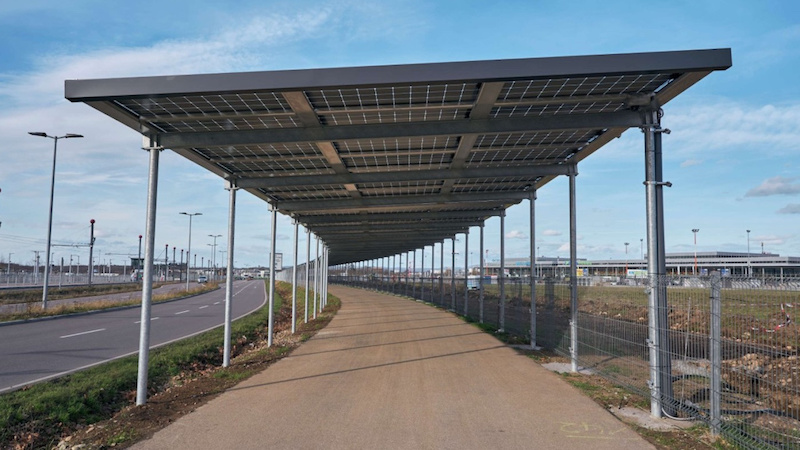Freiburg presents the first solar roof for cycle paths
According to its own statements, the city of Freiburg was the first city in Germany to build a solar roof for cycle paths. The solar cycle path is intended to generate several megawatt hours of energy each year and supply the local offices of the Fraunhofer Institute for Solar Energy Systems (ISE).
In order for Germany to become climate neutral by 2045, there are still a few things to do. By 2030 Germany wants to reduce its emissions by 65 percent compared to 1990. But this requires increasingly creative ideas. In addition to the expansion of wind power plants, which is gaining speed again, solar systems remain an essential pillar of the energy supply of the future.
Photovoltaic systems have one disadvantage, however: they take up a lot of space over the long term and take up space from agriculture and city planners. In Freiburg, the city planners, the Fraunhofer ISE and the energy supplier Badenova-Wärmeplus are therefore trying to find a way through which the existing infrastructure can be converted effectively.
Solar roof for cycle paths generates 280 megawatt hours of energy per year
The result was a solar roof for cycle paths, which those responsible equipped with special modules from the company Solarwatt from Dresden. In an average year, it is hoped that up to 280 megawatt hours will be generated. A cable will then transport the energy to the laboratories at Fraunhofer ISE.
The panels generate the energy directly at the consumer’s location. At the same time, the system requires hardly any additional space. In addition to the city of Freiburg and Fraunhofer ISE, cyclists also benefit. Because they don’t really get wet, even in bad weather, as long as they ride on the new bike path.
Solar cycle path canopy: 300 meter long route with 912 modules
If you would like to drive the route yourself, you have been able to do so since the turn of the year 2022/2023. The cycle path runs along the exhibition grounds and is around 300 meters long. The 912 solar modules also supply integrated lighting, which is activated by motion sensors via the cyclists.
In the long term it will be seen to what extent the concept delivers what it promises. The project partners assume that the system will save 125 tons of CO2 per year. With the ever-expanding bicycle network in Germany, there is huge potential to promote climate neutrality.
Also interesting:



